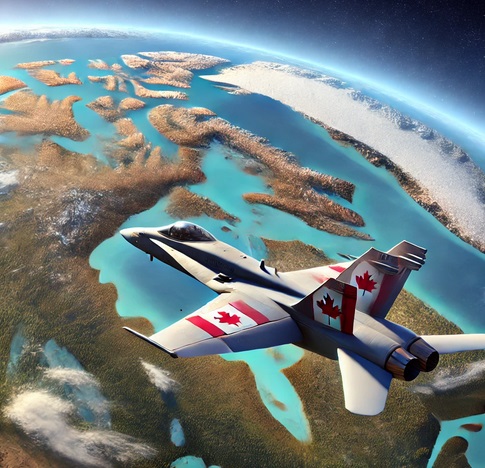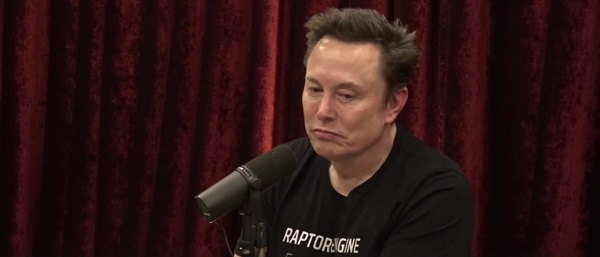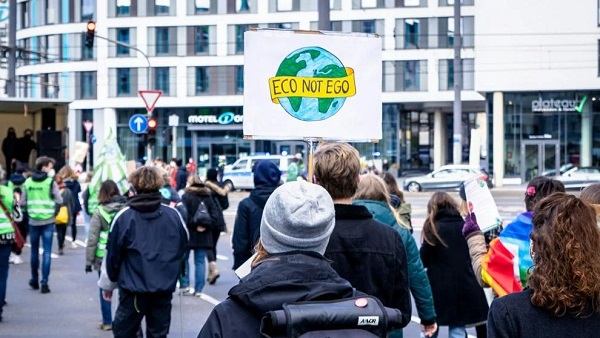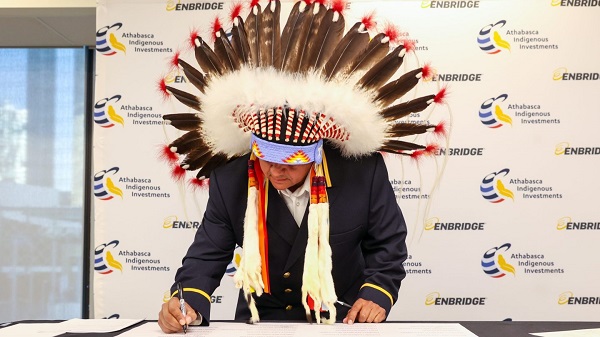Uncategorized
Solemn public pays tribute to Bush before dawn in Rotunda

WASHINGTON — The nation’s capital embraced George H.W. Bush in death with solemn ceremony and high tributes to his service and decency, as the remains of the 41st president took their place in the Capitol Rotunda for three days of mourning and praise by the political elite and everyday citizens alike.
Even before sunrise Tuesday, members of the public lined up to pay their respects as an
With Bush’s casket atop the Lincoln Catafalque, first used for Abraham Lincoln’s 1865 funeral, dignitaries came forward Monday to
President from 1989 to 1993, Bush died Friday at age 94.
In an invocation opening Monday evening’s ceremony, the U.S. House chaplain, the Rev. Patrick J Conroy, praised Bush’s commitment to public service, from Navy pilot to congressman, U.N. ambassador, envoy to China and then CIA director before being elected
“Here lies a great man,” said Rep. Paul Ryan, the House speaker, and “a gentle soul. … His legacy is grace perfected.”
Political combatants set aside their fights to
Pelosi and Chuck Schumer, the Senate Democratic leader, placed wreaths in the short ceremony before the rotunda was opened to the public.
Sent off from Texas with a 21-gun salute, Bush’s casket was carried to Joint Base Andrews outside the capital city aboard an aircraft that often serves as Air Force One and designated “Special Air Mission 41” in
Cannon fire roared again outside the Capitol as the sun sank and the younger President Bush stood with his hand over his heart, watching the casket’s procession up the steps.
Bush was remembered just feet away from what he called “Democracy’s front porch,” the west-facing steps of the Capitol where he was sworn in as president.
He will lie in state in the Capitol for public visitation through Wednesday. An invitation-only funeral service, which the Trumps will attend, is set for Wednesday at Washington National Cathedral.
Although Bush’s funeral services are suffused with the flourishes accorded presidents, by his choice they will not include a formal funeral procession through downtown Washington.
On Sunday, students, staff and visitors had flocked to Bush’s presidential library on the campus of Texas A&M University, with thousands of mourners paying their respects at a weekend candlelight vigil at a nearby pond and others contributing to growing flower memorials at Bush statues at both the library and a park in downtown Houston.
“I think he was one of the kindest, most generous men,” said Marge Frazier, who visited the downtown statue Sunday while showing friends from California around.
After services in Washington, Bush will be returned to Houston to lie in repose at St. Martin’s Episcopal Church before burial Thursday at his family plot on the library grounds. His final resting place will be alongside Barbara Bush, his wife of 73 years who died in April, and Robin Bush, the daughter they lost to leukemia in 1953 at age 3.
Trump has ordered the federal government closed Wednesday for a national day of mourning. Flags on public buildings are flying at half-staff for 30 days.
Bush’s passing puts him back in the Washington spotlight after more than two decades living the relatively low-key life of a former president. His death also reduces membership in the ex-presidents’ club to four: Jimmy Carter, Bill Clinton, George W. Bush and Barack Obama.
One of Bush’s major achievements was assembling the international military coalition that liberated the tiny, oil-rich nation of Kuwait from invading
A humble hero of World War II, Bush was just 20 when he survived being shot down during a bombing run over a Japanese island. He had joined the Navy when he turned 18.
Shortly before leaving the service, he married his 19-year-old sweetheart, Barbara Pierce, and forged the longest presidential marriage in U.S. history. Bush enrolled at Yale University after military service, becoming a scholar-athlete and captaining the baseball team to two College World Series before graduating Phi Beta Kappa after just 2
After moving to Texas to work in the oil business, Bush turned his attention to politics in the 1960s. He was elected to the first of two terms in Congress in 1967. He would go on to serve as ambassador to the United Nations and China, head of the CIA and chairman of the Republican National Committee before being elected to two terms as Ronald Reagan’s
Soon after he reached the height of his political popularity following the liberation of Kuwait, with public approval ratings that are the envy of today’s politicians, the U.S. economy began to sour and voters began to believe that Bush, never a great communicator — something even he acknowledged — was out of touch with ordinary people.
He was denied a second term by Arkansas Gov. Clinton, who would later become a close friend. The pair worked together to raise tens of millions of dollars for victims of a 2004 Indian Ocean tsunami and of Hurricane Katrina, which swamped New Orleans and the Gulf Coast in 2005.
“Who would have thought that I would be working with Bill Clinton of all people?” he joked in 2005.
In a recent essay, Clinton declared of Bush: “I just loved him.”
___
Associated Press writers Juan A. Lozano and Nomaan Merchant in Houston and Darlene Superville in Washington contributed to this report.
Calvin Woodward, Laurie Kellman And Ashraf Khalil, The Associated Press
Uncategorized
Poilievre on 2025 Election Interference – Carney sill hasn’t fired Liberal MP in Chinese election interference scandal

From Conservative Party Communications
“Yes. He must be disqualified. I find it incredible that Mark Carney would allow someone to run for his party that called for a Canadian citizen to be handed over to a foreign government on a bounty, a foreign government that would almost certainly execute that Canadian citizen.
“Think about that for a second. We have a Liberal MP saying that a Canadian citizen should be handed over to a foreign dictatorship to get a bounty so that that citizen could be murdered. And Mark Carney says he should stay on as a candidate. What does that say about whether Mark Carney would protect Canadians?
“Mark Carney is deeply conflicted. Just in November, he went to Beijing and secured a quarter-billion-dollar loan for his company from a state-owned Chinese bank. He’s deeply compromised, and he will never stand up for Canada against any foreign regime. It is another reason why Mr. Carney must show us all his assets, all the money he owes, all the money that his companies owe to foreign hostile regimes. And this story might not be entirely the story of the bounty, and a Liberal MP calling for a Canadian to be handed over for execution to a foreign government might not be something that the everyday Canadian can relate to because it’s so outrageous. But I ask you this, if Mark Carney would allow his Liberal MP to make a comment like this, when would he ever protect Canada or Canadians against foreign hostility?
“He has never put Canada first, and that’s why we cannot have a fourth Liberal term. After the Lost Liberal Decade, our country is a playground for foreign interference. Our economy is weaker than ever before. Our people more divided. We need a change to put Canada first with a new government that will stand up for the security and economy of our citizens and take back control of our destiny. Let’s bring it home.”
Uncategorized
Canada Needs A Real Plan To Compete Globally

From the Frontier Centre for Public Policy
Ottawa’s ideological policies have left Canada vulnerable. Strategic action is needed now
As Canada navigates an increasingly complex geopolitical landscape, the next federal government must move beyond reflexive anti—Americanism regardless of its political leanings. Instead, Canada should prioritize national interests while avoiding unnecessary conflict and subservience.
The notion that Canada can stand alone is as misguided as the idea that it is only an economic appendage of the United States. Both perspectives have influenced policy in Ottawa at different times, leading to mistakes.
Rather than engaging in futile name-calling or trade disputes, Canada must take strategic steps to reinforce its autonomy. This approach requires a pragmatic view rooted in Realpolitik—recognizing global realities, mitigating risks, governing for the whole country, and seizing opportunities while abandoning failed ideologies.
However, if Washington continues to pursue protectionist measures, Canada must find effective ways to counteract the weakened position Ottawa has placed the country in over the past decade.
One key strategy is diversifying trade relationships, notably by expanding economic ties with emerging markets such as India and Southeast Asia. This will require repairing Canada’s strained relationship with India and regaining political respect in China.
Unlike past Liberal trade missions, which often prioritized ideological talking points over substance, Canada must negotiate deals that protect domestic industries rather than turning summits into platforms for moral posturing.
A more effective approach would be strengthening partnerships with countries that value Canadian resources instead of vilifying them under misguided environmental policies. Expand LNG exports to Europe and Asia and leverage Canada’s critical minerals sector to establish reciprocal supply chains with non-Western economies, reducing economic reliance on the U.S.
Decades of complacency have left Canada vulnerable to American influence over its resource sector. Foreign-funded environmental groups have weakened domestic energy production, handing U.S. industries a strategic advantage. Ottawa must counter this by ensuring Canadian energy is developed at home rather than allowing suppressed domestic production to benefit foreign competitors.
Likewise, a robust industrial policy—prioritizing mining, manufacturing, and agricultural resilience—could reduce dependence on U.S. and Chinese imports. This does not mean adopting European-style subsidies but rather eliminating excessive regulations that make Canadian businesses uncompetitive, including costly domestic carbon tariffs.
Another key vulnerability is Canada’s growing military dependence on the U.S. through NORAD and NATO. While alliances are essential, decades of underfunding and neglect have turned the Canadian Armed Forces into little more than a symbolic force. Canada must learn self-reliance and commit to serious investment in defence.
Increasing defence spending—not to meet NATO targets but to build deterrence—is essential. Ottawa must reform its outdated procurement processes and develop a domestic defence manufacturing base, reducing reliance on foreign arms deals.
Canada’s vast Arctic is also at risk. Without continued investment in northern sovereignty, Ottawa may find itself locked out of its own backyard by more assertive global powers.
For too long, Canada has relied on an economic model that prioritizes federal redistribution over wealth creation and productivity. A competitive tax regime—one that attracts investment instead of punishing success—is essential.
A capital gains tax hike might satisfy activists in Toronto, but it does little to attract investments and encourage economic growth. Likewise, Ottawa must abandon ideological green policies that threaten agri-food production, whether by overregulating farmers or ranchers. At the same time, it must address inefficiencies in supply management once and for all. Canada must be able to feed a growing world without unnecessary bureaucratic obstacles.
Ottawa must also create an environment where businesses can innovate and grow without excessive regulatory burdens. This includes eliminating interprovincial trade barriers that stifle commerce.
Similarly, Canada’s tech sector, long hindered by predatory regulations, should be freed from excessive government interference. Instead of suffocating innovation with compliance mandates, Ottawa should focus on deregulation while implementing stronger security measures for foreign tech firms operating in Canada.
Perhaps Ottawa’s greatest mistake is its knee-jerk reactions to American policies, made without a coherent long-term strategy. Performative trade disputes with Washington and symbolic grandstanding in multilateral organizations do little to advance Canada’s interests.
Instead of reacting emotionally, Canada must take proactive steps to secure its economic, resource, and defence future. That is the role of a responsible government.
History’s best strategists understood that one should never fight an opponent’s war but instead dictate the terms of engagement. Canada’s future does not depend on reacting to Washington’s policies—these are calculated strategies, not whims. Instead, Canada’s success will be determined by its ability to act in the interests of citizens in all regions of the country, and seeing the world as it is rather than how ideological narratives wish it to be.
Marco Navarro-Génie is the vice president of research at the Frontier Centre for Public Policy. With Barry Cooper, he is co-author of Canada’s COVID: The Story of a Pandemic Moral Panic (2023).
-

 espionage1 day ago
espionage1 day agoEx-NYPD Cop Jailed in Beijing’s Transnational Repatriation Plot, Canada Remains Soft Target
-

 2025 Federal Election2 days ago
2025 Federal Election2 days agoNeil Young + Carney / Freedom Bros
-

 Business1 day ago
Business1 day agoDOGE Is Ending The ‘Eternal Life’ Of Government
-

 2025 Federal Election1 day ago
2025 Federal Election1 day agoCanada drops retaliatory tariffs on automakers, pauses other tariffs
-

 Autism2 days ago
Autism2 days agoRFK Jr. Exposes a Chilling New Autism Reality
-

 International2 days ago
International2 days agoUK Supreme Court rules ‘woman’ means biological female
-

 2025 Federal Election1 day ago
2025 Federal Election1 day agoTucker Carlson Interviews Maxime Bernier: Trump’s Tariffs, Mass Immigration, and the Oncoming Canadian Revolution
-

 Daily Caller1 day ago
Daily Caller1 day agoDOJ Releases Dossier Of Deported Maryland Man’s Alleged MS-13 Gang Ties








